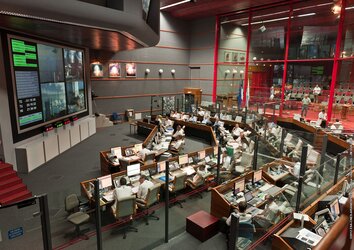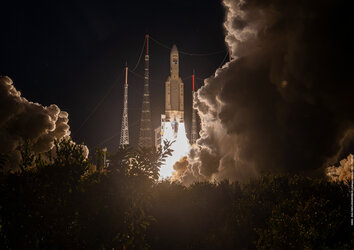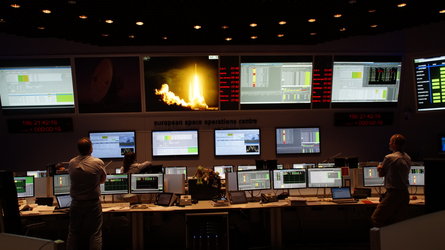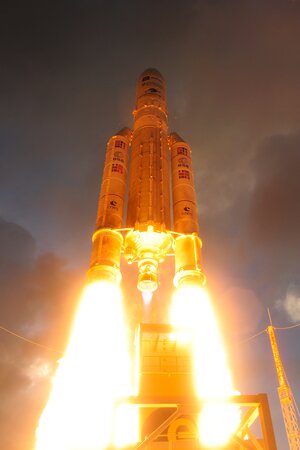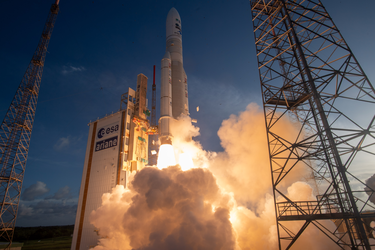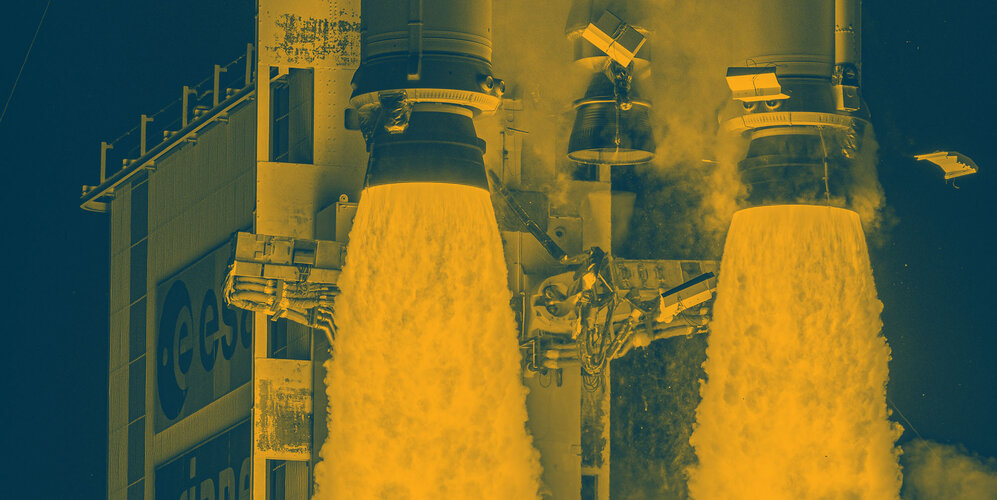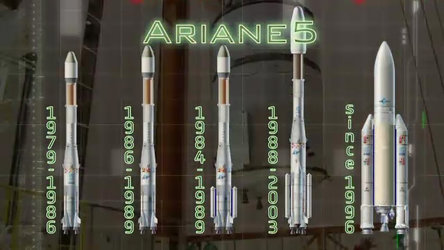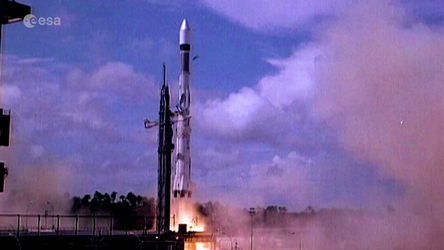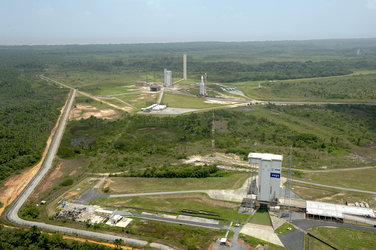Adapted Ariane 5 ME
This page details a concept evolution of the Ariane 5 rocket, called Ariane 5 Mid-life Evolutions (ME). The evolution was never implemented as decisions at the European Space Agency's Council at Ministerial level in 2014 were to develop Ariane 6. It is left as is and no longer updated.
| Adapted Ariane 5 Mid-life Evolutions | |
|---|---|
| Height | up to 53 m |
| Diameter | up to 5.4 m |
| Liftoff mass with two satellites | around 800 tonnes |
| Payload mass into geotransfer orbit followed by a deorbit of the upper stage | up to 12 tonnes |

Adapted Ariane 5 ME
Following the November 2012 ESA Council meeting at Ministerial level in Naples, Italy, Ministers secured investments for detailed definition studies of the new Ariane 6 launcher and activities on the Adapted Ariane 5 ME (Mid-life Evolution), with the goal of developing as many commonalities as possible between the two vehicles.
To limit the overall development cost, time and risk for the combined development of the Adapted Ariane 5 ME and Ariane 6 upper stage commonality assessments were made. These are related to technical and organisational changes, aimed at increasing its competitiveness.
The objective was to maximise commonalities while avoiding delays to commercial exploitation of the two launchers and striving to minimise recurring costs for Ariane 6.
This is reflected in the Adapted Ariane 5 ME design and production facilities as well as the Ariane 6 design choices. So, the Adapted Ariane 5 ME upper stage and fairing diameters remain at 5.4 m.
This modernised launcher responded to the need for: more flexibility in accommodating payloads by way of a dual-launch configuration; an upper stage reignition capability for stage deorbiting to mitigate orbital debris; the capability to complete complex missions such as planetary exploration.
The qualification flight for the Adapted Ariane 5 ME was scheduled for mid-2018, followed by a gradual introduction into service. The decision regarding completion of the development of this launcher was to be taken at the next ESA Ministerial Council meeting, in December 2014, in the context of the overall strategy of launcher development for the next 10 years.
Adapted Ariane 5 ME could replace Ariane 5 ECA and Ariane 5 ES to become Europe’s new workhorse launcher until the arrival of the new Ariane 6.
Adapted Ariane 5 ME elements
Adapted Ariane 5 ME consists of three parts.
1. Lower composite (EAP and EPC)
The lower composite was identical to that used on the current Ariane 5 ECA and ES versions. It was fully operational and comprised of two solid-propellant boosters (EAP: Etage d’Accélération à Poudre) and the cryogenic main stage (EPC: Etage Principal Cryotechnique), equipped with the Vulcain 2 engine.
2. Upper composite (Vinci, VEB and supporting structure)
The upper composite comprised of:
- A new cryogenic upper stage containing 28 tonnes of propellant (liquid hydrogen and oxygen) with a Vinci new-technology engine, providing 180 kN of thrust and reignition capabilities;
- The Vehicle Equipment Bay (VEB), ‘the brain’, autonomously controling the whole vehicle, with better integration in the upper stage structure;
- A new supporting structure (1780 mm diameter) interfacing with the payload.
3. Launcher upper part (fairing and Sylda 5)
The launcher upper part comprised of:
- A new, longer fairing that protects the payload at liftoff and during atmospheric flight (5.4 m diameter, 20 m high). The fairing splits into two pyrotechnically and was to be jettisoned over three minutes after liftoff, at an altitude above 100 km.
- A new structure accommodating the lower and upper satellites, Sylda 5 (Système de Lancement Double Ariane 5): 4.6 m diameter, 8 m high.
Adapted Ariane 5 ME missions
A number of new versatile cryogenic upper stage concepts were assessed. The improved key performance and capability came from the use of a new engine, Vinci, with a thrust of 180 kN. It uses advanced technologies, such as an expander cycle and a deployable nozzle.

This evolution would allow the Adapted Ariane 5 ME to handle a wider range of missions:
- Upper stage reignition allows the injection of satellites in a higher orbit (GTO+: supersynchronous orbit), which reduces the payload’s propulsion needs to reach the target geostationary orbit (GEO) and maximises the launcher’s performance.
- Versatility opens the door to a wide range of combinations and pairing of different types of institutional missions, such as Earth-escape, GTO-escape, GEO and Moon or Mars missions, with improved precision and performance.
- The guaranteed direct deorbiting (GTO-DD) and/or injection into graveyard orbits will keep the space environment free of space debris.




